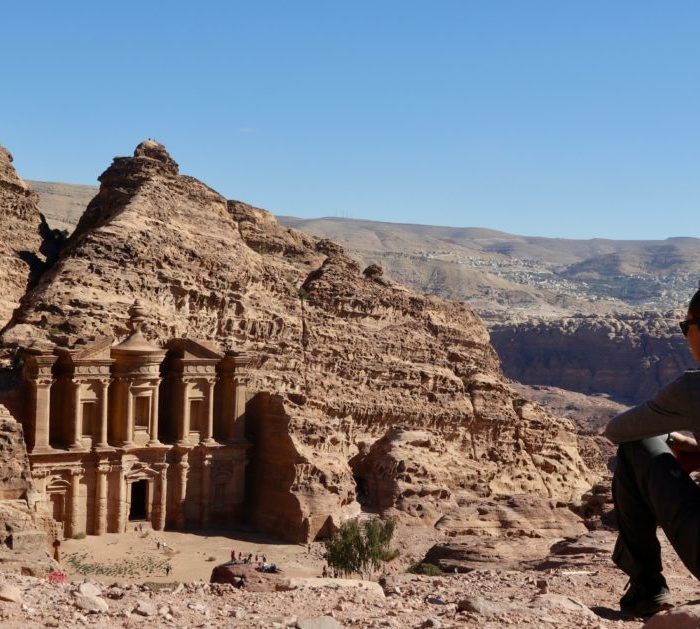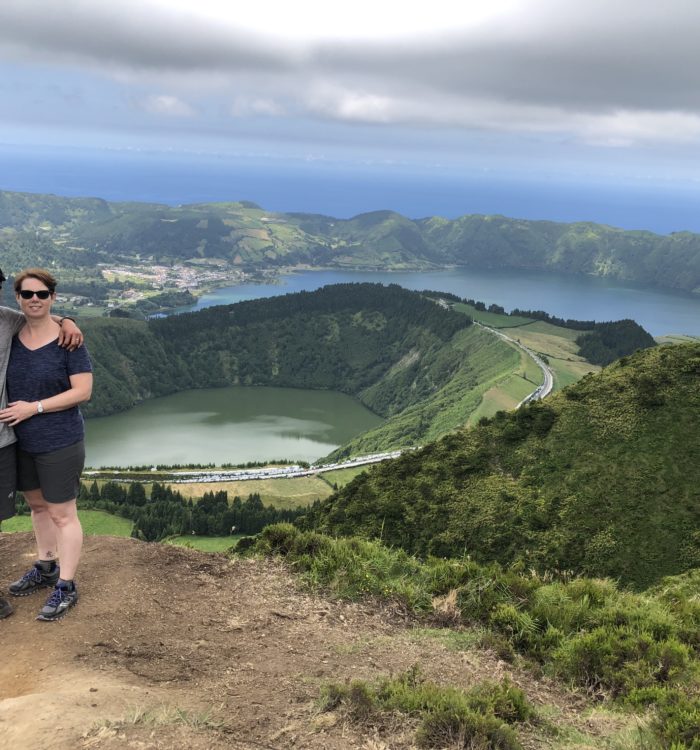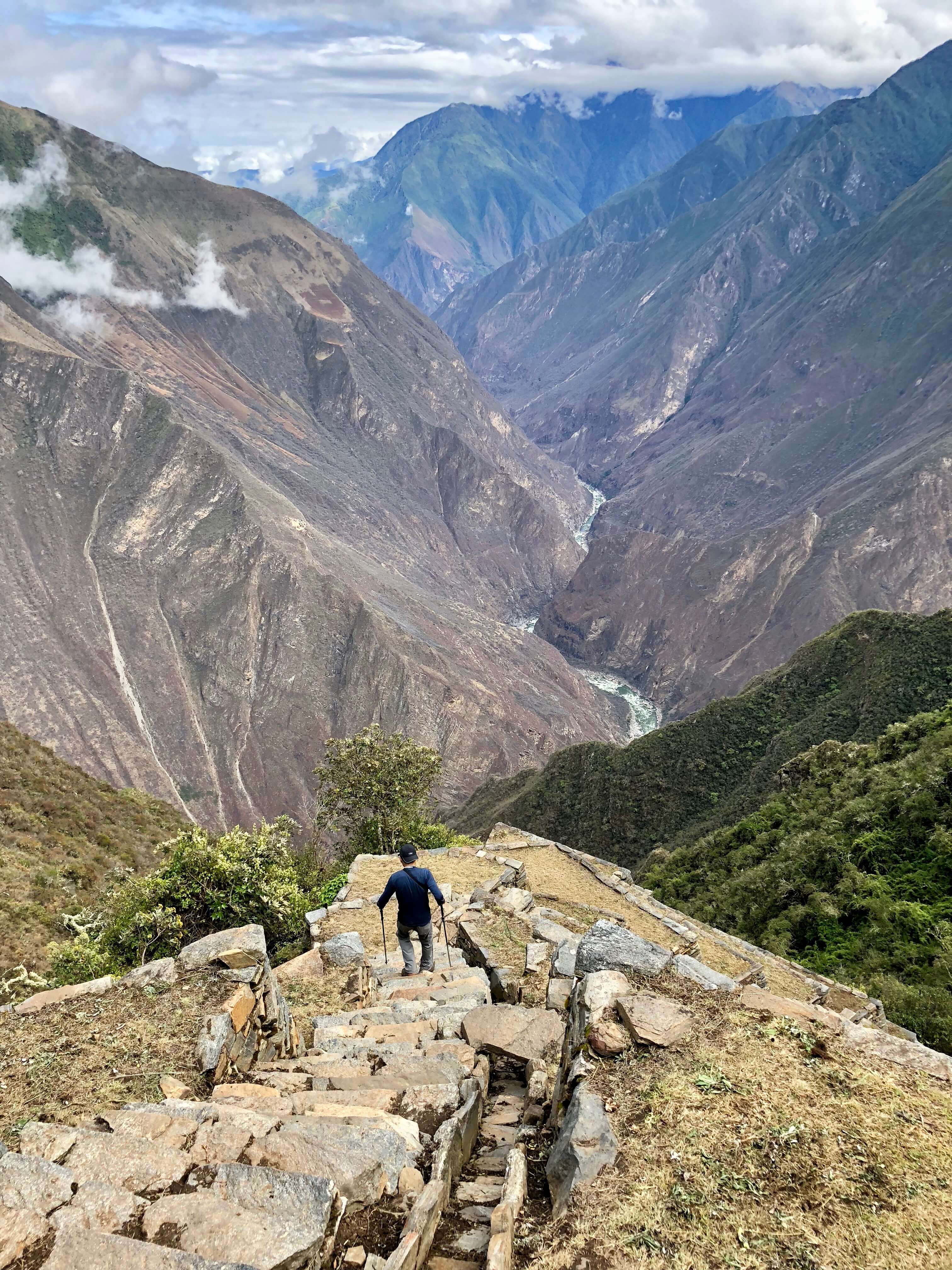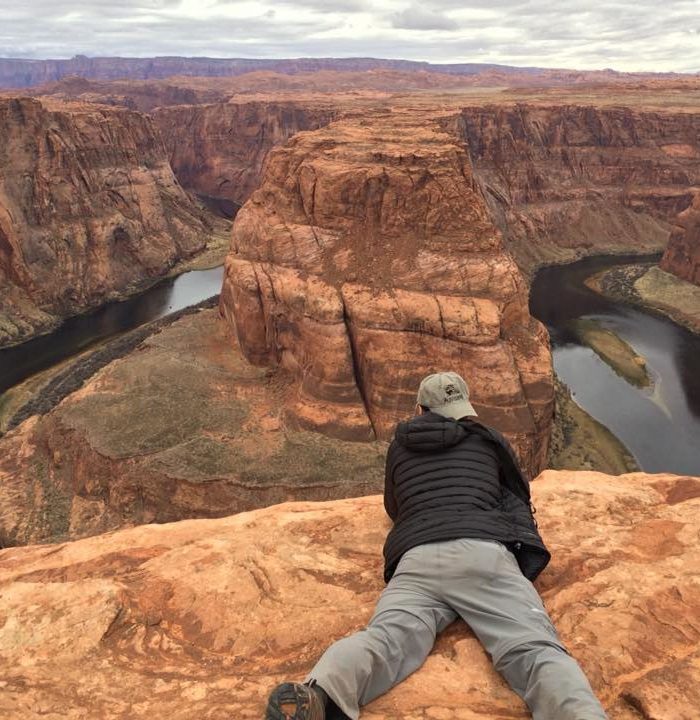Jan 11-15, 2010
For most of the past four months, Trish was often the only white folk around. And I could almost blend in well enough to get the occasional local price. All this came to a screeching halt in the chaos and dusty mayhem they call, Cairo. The largest city in Africa, 20 million people . We landed with virtually no prep, or research—completely vulnerable. Many had forewarned us of the locals, how aggressive and shifty they are. Trish might disagree but I think they’ve been more honest, courteous and friendly than just about anybody we’ve met.
Case in point. One night I wandered the lively back alleys- looking for necessities eg beer (an impossible search in Muslim world) yogurt, and chocolate, etc…I had no idea of the costs, didn’t have enough Arabic to BS my way, and couldn’t have looked any more conspicuous. Nevertheless, I came back with 2 chicken sandwiches and a bag of groceries. I paid with a 100 pound note and got change of 86. That’s under $3 Cdn. In Vietnam I’d have been lucky to get 2 bits back. Sure an hour earlier as I sipped the black gruel they call Turkish coffee, some dude hit on me to check out his store, another girl came begging. But they all left with minimal fuss.
For all the times we expected to be played and overcharged, it really only happened a few times. Most people were very hospitable.
This is not to say Cairo is a piece of cake. We’ve seen numerous shell-socked tourists clutching each other as if they were inching along the plank. Three lanes of gridlocked traffic are taken up by 5 shifting lanes of kamikaze vehicles. The pollution and noise are Olympian. Black belt haggling and direct communication are norms. Years of stereotypes about Muslims and terrorists have left many of us with subliminal red flags about all Arabs. And for us, both Morocco and Turkey offered more aesthetic, even more beautiful mosques. But it felt fresh being a newbie again. Asia doesn’t prep you for the Arab world very well. The donkey carts, the head scarves, the lack of rice noodles, the big hairy men, the copious amounts of hair gel…
We spent our first few days going as local as possible, local eats, local collective minivans and the METRO, etc… The METRO is interesting though we saw no gringos on them (only 20 cents Cdn, and the only one in Africa). ‘Women Only,’ subway cars are offered, and one would think they would be a great way to ride a subway safely. Wrong. During one trip we were sardined into separate cars. Trish rode along with scores of robed women. A cat fight broke out. Mayhem on the car ensued and all the women seemed to get in on it. Before it broke up, blood was drawn, and top of the lung screaming could be heard. We reckon it was about a man. What else?
Despite or inspite of buddy Marc Brown’s advice, we did hire a slave for a few days. We met Mohammed, a certified guide at the spectacularly rich yet bewidering Egyptian Museum —a gentle, aging tour guide with a wreck of a car. A native of Giza where our hotel (Barcelo) was, Mohammed did most of the thinking for us.
Old Cairo:
Citadel and Mohamed Ali Mosque (19th Century):
Then of course there are the 3 Great Pyramids of Giza, and the original ones at Saqqara. If you were like us and thought the former were in the middle of the desert, think again. Let us put it this way. We saw the celebrated (and overrated) Sound and Light show from the roof of the Pizza Hut nearby. Sure we had to filter out the call to prayer and the air conditioning, but we saved on on the 75Egyptian Pound entry fee. Giza was once a farming community. Now its’ 6 million people are part of the greater Cairo urban sprawl, though with donkey carts, horses and camels, it has a village feel to it in some parts.
Anyway, the Great Pyramid–the biggest (not to be confused with the scores of others in the Valley), is an engineering, geometrical, mathematical, and spiritual masterpiece. It’s absolutely stunning how rudimentary tools were used to quarry, transport, sculpture, then precisely fit millions of stone blocks, weighing anywhere from 2-6 tons each, fit into a perfect symmetrical and astronomical position.
Some of our favorite parts were exploring the lesser known tombs,some with wonderfully intact and well preserved 4500 yr old paintings, carvings and hieroglyphics.
The cool thing about mummies is how the dead bodies are drained, the liver, intestines, stomach and lungs are removed then placed into stone jars. The body is then filled with herbs and spices, and chemicals before they are wrapped in linen. After that some God judges them (sound familiar) and if they’ve been good, they go to the afterlife, which sounds like an all-inclusive resort with no tipping.
And that stuff about Jewish slave labour (think Charleton Heston in Ten Commandments) building the pyramids doesn’t fly here. Archaeological evidence points to rotating teams of paid labour and highly skilled craftsman doing the deeds.
For sheer atmosphere and full on in your face Cairo, there’s Islamic Cairo. You get 1100 yr old mosques like Al Azhar, knock em sock em Khan Al Khalil bazaar where the vendors will physically drag you into their shops,
and off the tourist trail gems like….
the Sultan’s old harem:
There were times we stumbled into mosques during prayer time. What a wonderfully serene experience.
The street falafels, usually served up in joints rocking with grimy charm and a decided lack of anything sanitary….but each crunchy and moist, handful of heaven was served up for 40-60cents…..yummmmmmmmmmm!
Runner up…the pitted, sliced kalamata olives at our hotel breakfast…they crunched, instead of squished with every juicy bite
Next:
With a scant few hours before we head home, it’s time to pack and sign off until February, when the ANTARCTICA via BUENOS AIRES and PATAGONIA legs will be picked up.
A thousand thank yous to those who followed and supported us. Hasta luego.



